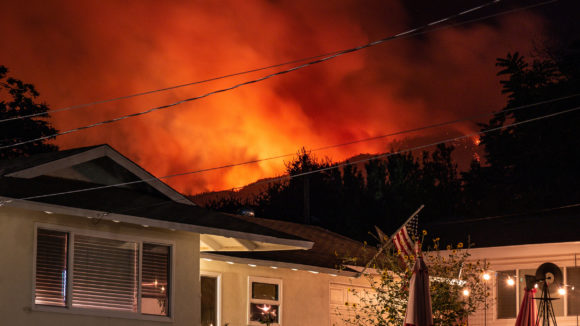California’s insurance commissioner in late October pledged to step up efforts to protect the state’s residents from wildfires and address a pullback of private insurers from the state’s riskiest areas.
Insurance Commissioner Ricardo Lara convened a “virtual investigatory hearing” to initiate a series of regulatory actions that will protect residents from the increasing risk of wildfires.
“We will reduce this risk of wildfire spread and help reinvigorate our state’s economy,” Lara said, noting that the state is in the midst of another severe wildfire season.
Several years of destructive wildfires have made insurance expensive and difficult to find for many Californians, particularly those living in high wildfire risk areas of the state, prompting Lara’s actions, which he said will be aimed at helping stabilize the insurance market while protecting lives and homes, reducing catastrophic wildfire losses, and increasing transparency for consumers.
Lara plans to use his authority in four areas: pushing for incentives for mitigation; establishing statewide standards for hardened homes; creating fire risk scores that are transparent; requiring insurers to seek adequate and justifiable rates to protect the solvency of the market.
Both rates and availability have been impacted by the wildfires, according to the California Department of Insurance. According to the CDI, rate decrease requests have dropped to zero in the past five years, while rate increase requests have gone up.
Private carriers have been dropping coverage or refusing to underwrite in wildfire-prone areas, which is forcing more people onto the FAIR Plan, a decades-old program in California meant to be a last resort for people who can’t get insurance from carriers such as Allstate Corp. and State Farm Mutual Automobile Insurance Co.
Lara had been trying to compel the FAIR Plan to offer comprehensive policies to homeowners who lost their property insurance because of the threat of wildfires. But a judge ruled in late February the FAIR plan can’t be required to provide coverage for other hazards such as flooding or theft.
Lara pledged to continue that battle. “I will not back down from my order,” Lara said.
According to the CDI, there was a 31% increase in 2019 in non-renewals in the private insurance market, and a 203% increase in non-renewals in top 10 counties with highest exposure homes. At the same time, the FAIR Plan saw a 36% increase policies statewide, and a 559% increase in top risk counties, according to CDI.
“California’s voluntary insurance market has withdrawn from a lot of sectors,” said Bryant Henley, special counsel and deputy commissioner for the CDI.
The American Property Casualty Insurance Association and Lara have been at odds about making homeowners insurance more available in wildfire prone areas.
APCIA, along with the Personal Insurance Federation of California, issued a joint statement in response to the hearing:
“As the impacts of climate change are felt with larger and more intense fires and threats to our communities, lives and property we must work together as neighbors, communities, regulators and insurers to ensure access to comprehensive homeowners insurance for all Californians.”
The statement notes that insurers are seeing mounting economic losses in California, where average annual wildfire losses trailed well below $5 billion even within this millennium, and leapt to more than $26 billion in 2017 and 2018, a level of loss that is not sustainable in the long term.
“There is no easy way to address the many complex issues impacting the availability and affordability of homeowners coverage in fire-prone areas,” the joint statement continues. “However, working collaboratively to ensure rates reflect the new and increased risk of wildfire, using modern catastrophe models to better assess risk, and promoting effective strategies to mitigate wildfires puts us on the right path.”
The hearing included testimony from homeowners who lost their coverage, the insurance industry, consumer advocates and firefighting officials. Other topics included resilience, and home hardening.
The state already looks a bit risky for insurers.
A recent report shows nearly 2 million homes, mostly in the Western U.S., with a rebuilding value of more than $638 billion are at an elevated risk of wildfire damage.The annual wildfire report from data provider CoreLogic looked at the risk in 15 wildfire-prone states. California is home to 76% of the residences on the top 10 list.
Topics California Catastrophe Carriers Natural Disasters Wildfire Homeowners Market
Was this article valuable?
Here are more articles you may enjoy.



 Chubb to Acquire MGA Healthy Paws From Aon
Chubb to Acquire MGA Healthy Paws From Aon  UnitedHealth Says Hackers Possibly Stole Large Number of Americans’ Data
UnitedHealth Says Hackers Possibly Stole Large Number of Americans’ Data  California Sees Two More Property Insurers Withdraw From Market
California Sees Two More Property Insurers Withdraw From Market  AIG General Insurance Chairman McElroy to Retire May 1
AIG General Insurance Chairman McElroy to Retire May 1 


